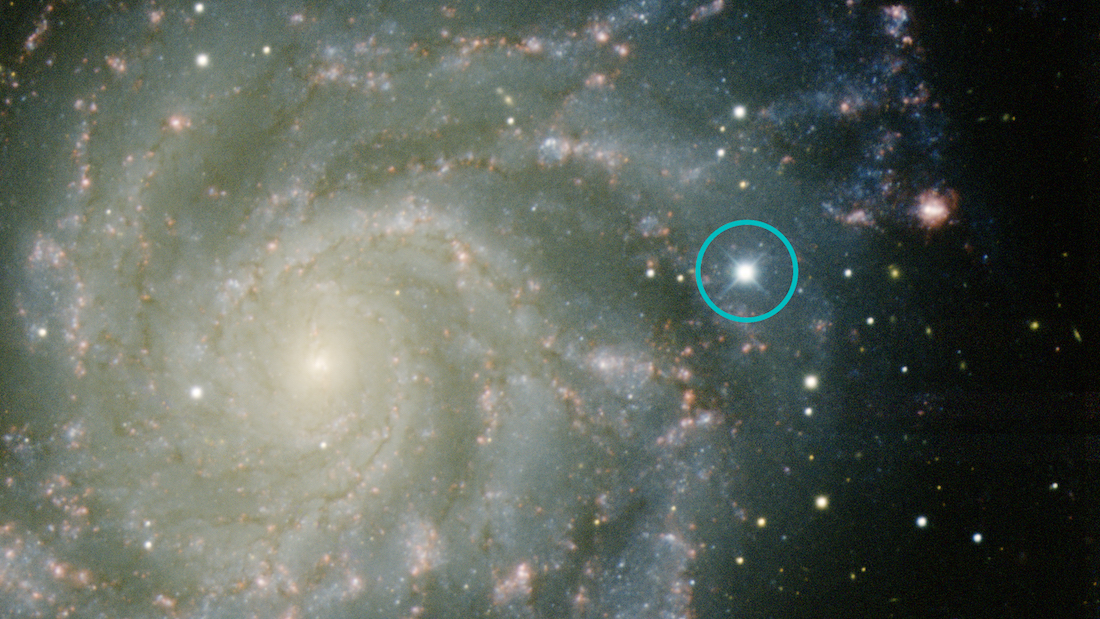Discovering Supernovae

This image shows a supernova that exploded in the nearby galaxy M101. The supernova is circled. Notice that it is bright compared to the light from its host galaxy. But how can we know if it’s a supernova? The answer is, with this picture alone, we can’t!
Astronomers find supernovae by comparing two or more images of the same region in the sky and looking for sudden changes in the brightness of an object in the images. Since supernovae are found in galaxies, we search for supernovae by comparing images of the same galaxy taken at different times (a technique called “blinking”). Once astronomers find a supernova, they take as many images as possible over a period of months to study how the supernova changes in brightness. Since Rubin Observatory takes images of the entire sky (visible from its location) every three to four nights, it has a much greater ability to detect the changes in brightness of objects than other telescopes.
Please answer all questions before continuing to the next page.
